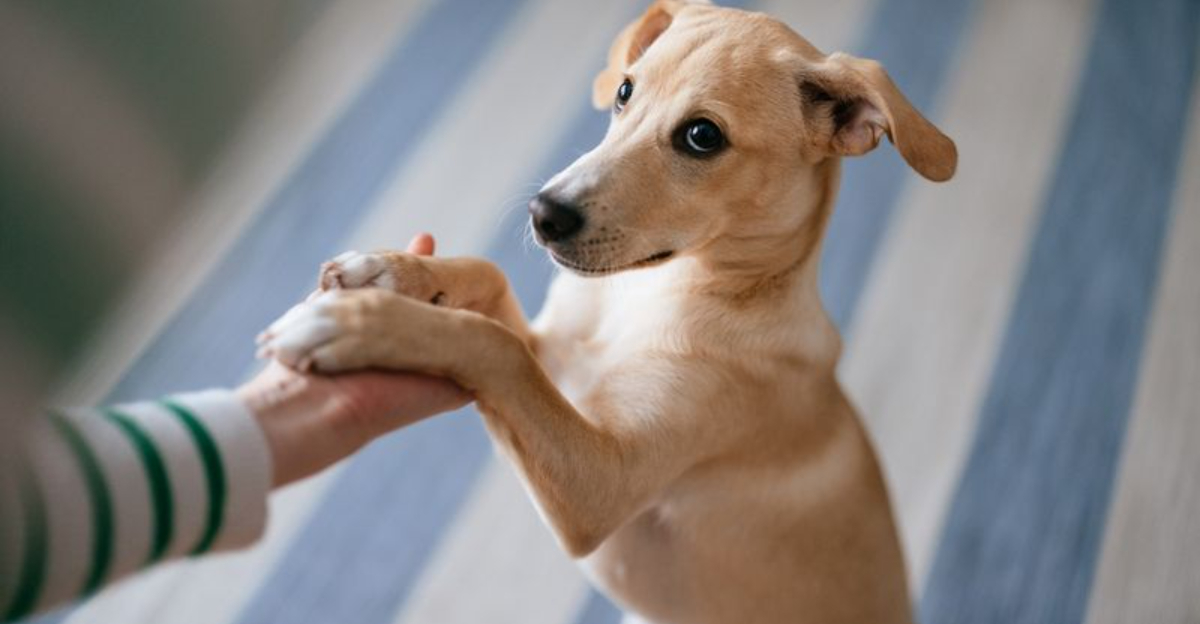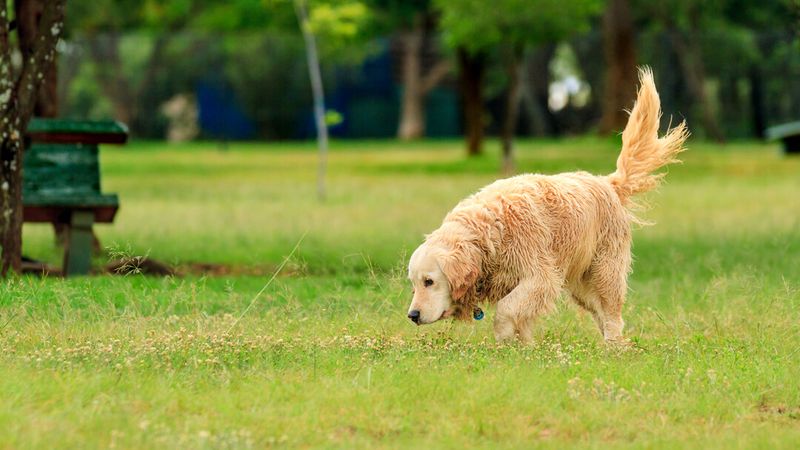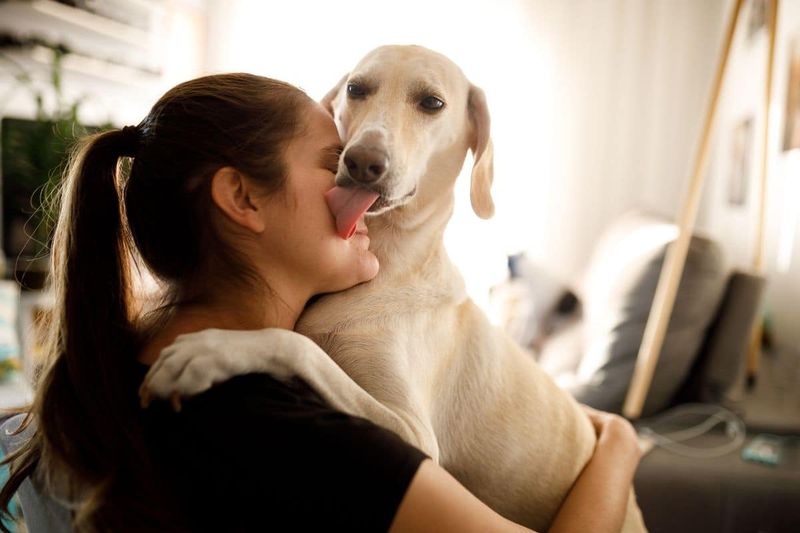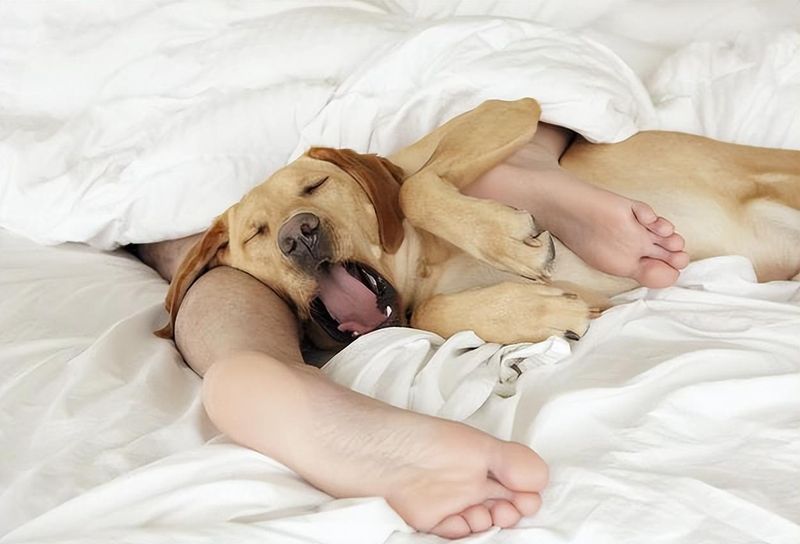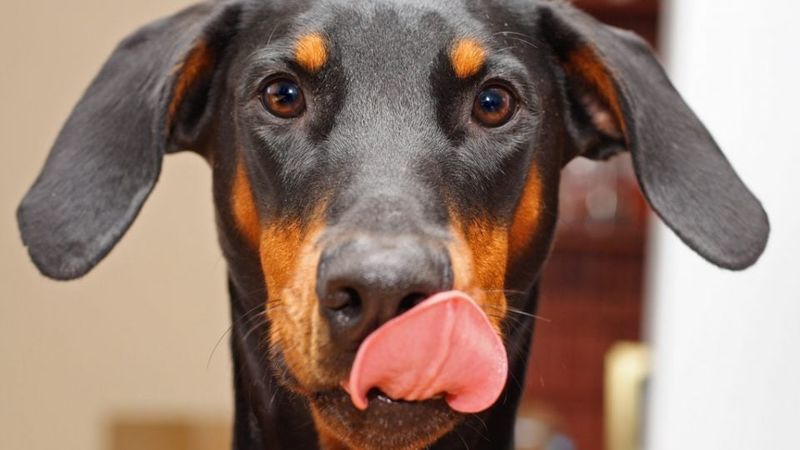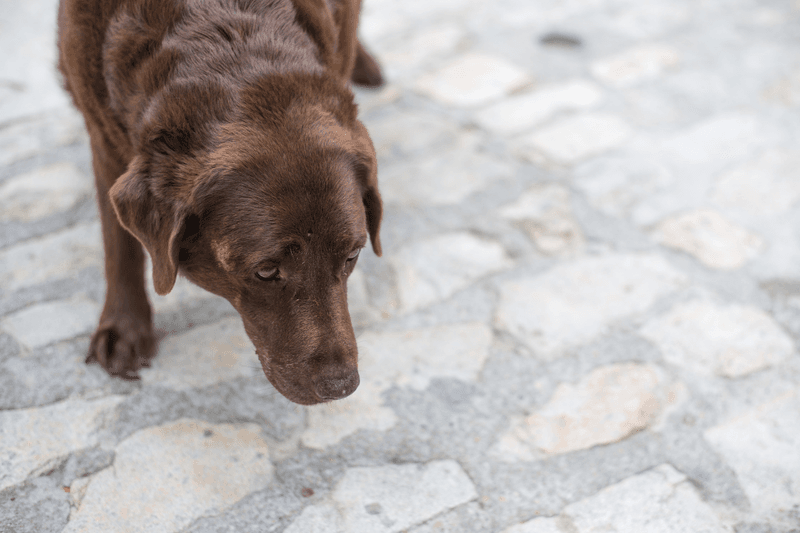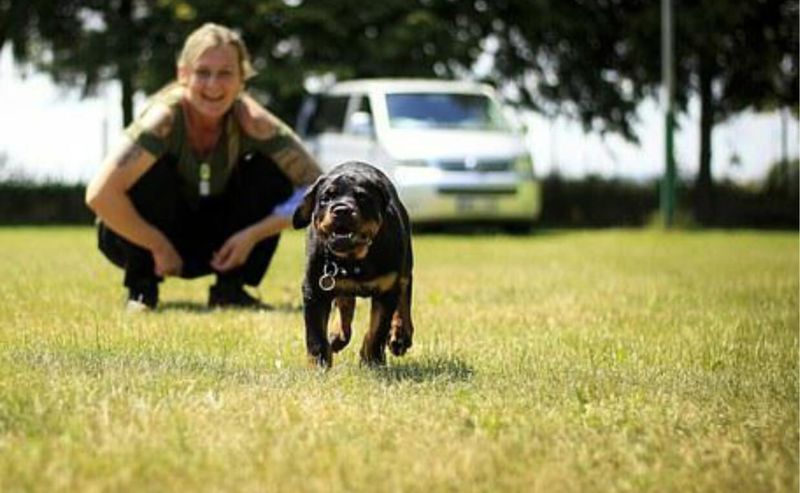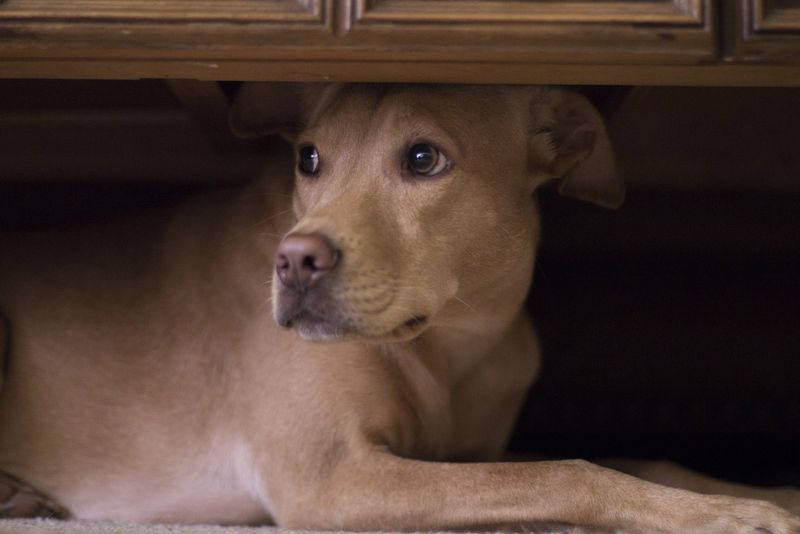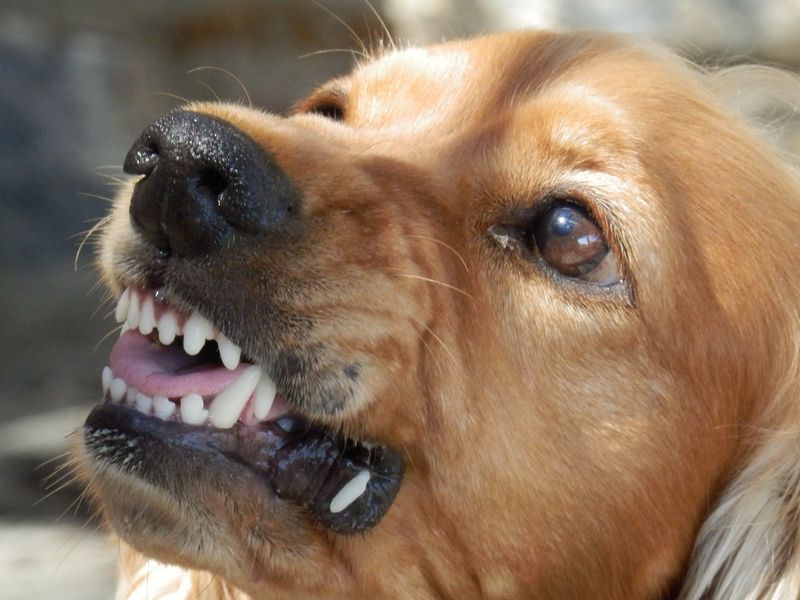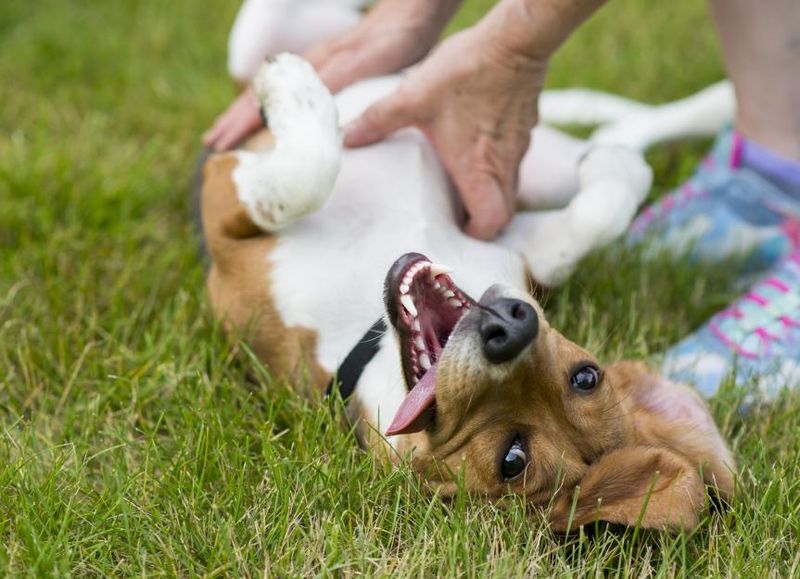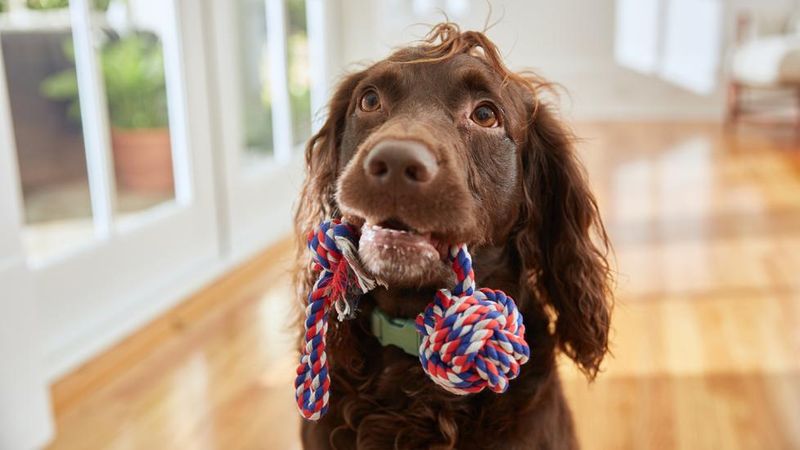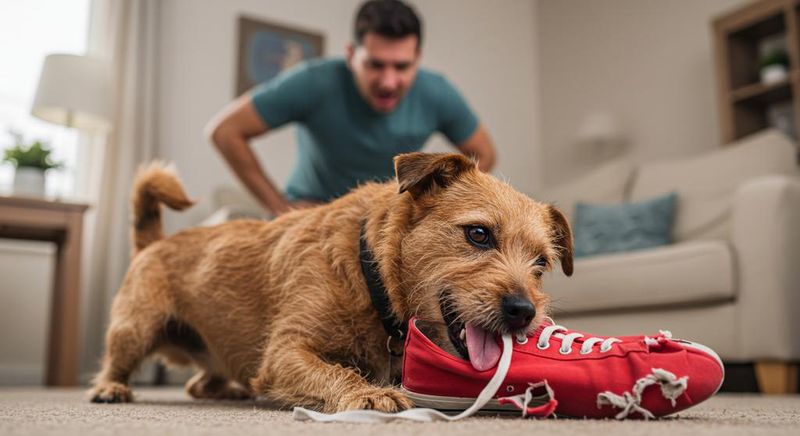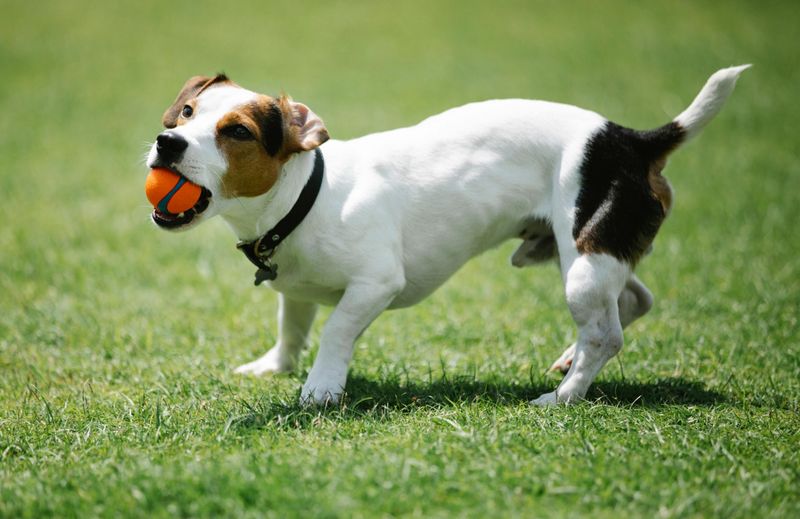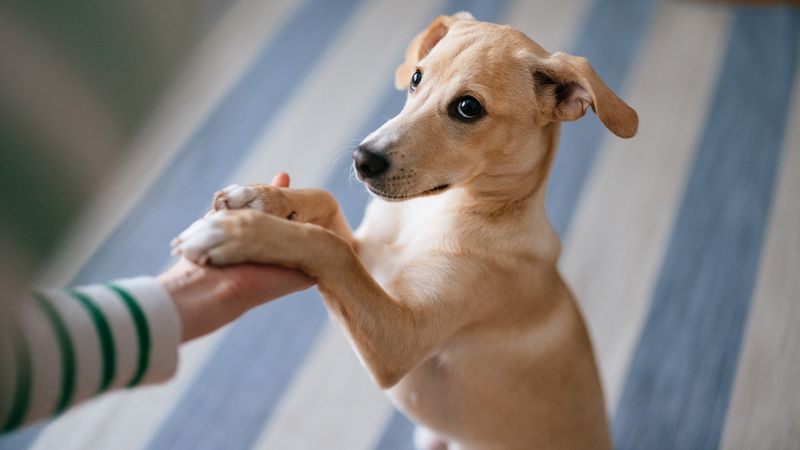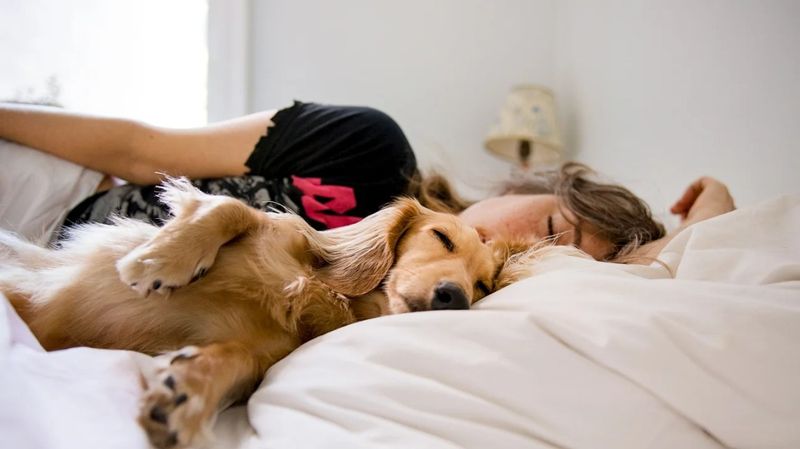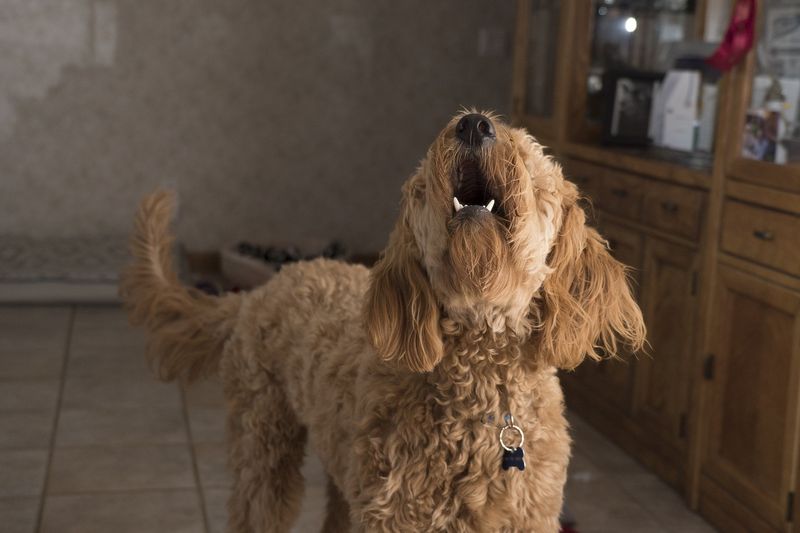Dogs communicate a great deal through their behavior. Understanding these signs can deepen the bond between humans and their canine companions. While some actions express affection and loyalty, others might indicate a need for space or discomfort. This exploration of 22 distinct dog behaviors will help you decipher whether your furry friend is showing love or signaling distance.
Tail Wagging to the Right
A tail wagging to the right is a strong sign of affection and happiness. Dogs often display this behavior when they are genuinely glad to see someone they love. It is more than a simple wag; it’s a heartfelt gesture that indicates trust and joy.
Imagine meeting your dog after a long day at work, and their tail moves enthusiastically to the right, signaling the deep bond you share. This action is not merely physical; it is an emotional expression of their attachment to you.
Understanding this subtle yet significant sign can strengthen your relationship.
Licking Your Face
Licking your face, especially after a brief separation, is a dog’s affectionate greeting. This behavior harks back to their puppyhood when they would lick their mother’s face to show submission and love.
It’s a warm and wet way to say, “I missed you!” If your furry friend greets you with this slobbery welcome, it’s a sure sign of their adoration.
Though it might not be everyone’s favorite form of affection, it is undeniably a heartfelt gesture. Embrace this quirky expression of love as a testament to your dog’s loyalty.
Following You Everywhere
Some dogs become a furry shadow, never wanting to leave your side. This constant companionship is a clear indication of their devotion and trust.
Whether you’re moving from room to room or stepping out for an errand, having your dog follow you speaks volumes of their attachment.
It is not just a sign of love but also a way to ensure they are part of your life. Though it might sometimes feel overwhelming, cherish this behavior as an emblem of the deep connection shared.
Sleeping Next to You
When a dog chooses to sleep next to you, it’s a profound demonstration of trust and affection. This behavior is rooted in the pack mentality; you are their chosen pack.
It is a comforting ritual that reassures both you and your pet of the bond you share. The warmth and proximity reflect their security and love.
As you drift into slumber together, know that this shared space is a sanctuary of mutual respect and devotion, strengthening your relationship each night.
Bringing You Toys
Offering toys is a dog’s way of sharing joy and inviting play. It is a gesture that means they want to engage and spend quality time with you.
This action isn’t just about amusement; it signifies trust and affection. By sharing their prized possessions, your dog is expressing their willingness to connect.
Encourage this behavior by engaging in play, reinforcing the love and friendship they seek to nurture. This simple act is a language of love that transcends words.
Leaning Against You
When a dog leans against you, it is more than seeking comfort; it’s an expression of trust and affection. This behavior shows they feel safe and secure in your presence.
Similar to a friend resting a head on your shoulder, a dog’s lean is a simple yet profound gesture of companionship.
Treasure these moments as they signify a strong bond. A gentle lean might be their way of saying, “I love you,” without uttering a single word.
Licking Their Lips
While licking lips often relates to hunger, it can also indicate stress or discomfort. Unlike other loving gestures, this behavior might signal anxiety or unease.
It is essential to pay attention to the context. If your dog frequently licks their lips, observe their environment for triggers.
Understanding this behavior can help you identify and alleviate any underlying stressors. It is a reminder that dogs, like humans, have complex emotions that require empathy and care.
Yawning Excessively
Yawning isn’t always about fatigue in dogs; it can be a sign of stress or discomfort. If your dog yawns excessively in a bustling environment, they might be feeling overwhelmed.
This subtle cue is often overlooked but is vital in understanding your pet’s emotional state.
By recognizing this sign, you can provide a more comfortable setting, showing empathy and understanding. It’s a gentle reminder that dogs communicate their needs in many ways.
Stiff Body Language
A dog’s stiff body language can be an indicator of unease or insecurity. Unlike the relaxed posture seen in content dogs, stiffness often signals a need for space.
It’s crucial to observe these physical cues, as they reveal much about your dog’s feelings.
Responding to their needs by providing a calm and reassuring environment can ease their tension and enhance your bond. It’s a silent plea for understanding and respect.
Avoiding Eye Contact
Avoiding eye contact in dogs often signals discomfort or submission. While direct eye contact is seen as a loving gesture, looking away can mean a need for reassurance.
This behavior might occur when they feel threatened or anxious. Recognizing this sign allows you to provide comfort and build trust.
Approach with patience and gentle affection to help your dog feel secure and loved.
Ignoring Commands
Ignoring commands can be a sign of distance or defiance in dogs. This behavior might indicate that your dog feels independent or is testing boundaries.
It’s essential to approach this with understanding rather than frustration. Encourage positive reinforcement to rebuild trust and cooperation.
Recognize that this behavior might stem from confusion or distraction, not merely disobedience.
Hiding Away
Hiding is a behavior that often indicates fear or a desire to escape from overwhelming situations. When your dog seeks solitude, it’s crucial to identify any stressors that might be causing this behavior.
By providing a safe and comforting environment, you can help them feel more secure.
Understanding this sign allows you to address their needs compassionately, strengthening your connection.
Growling
Growling is a warning sign that a dog feels threatened or needs space. While it might seem aggressive, it’s often a plea for understanding.
Respecting this boundary shows empathy and fosters trust. By addressing the underlying cause, you can ensure your dog feels safe and understood.
It’s a reminder that even negative behaviors are opportunities for deeper connection and insight.
Rolling Over for Belly Rubs
When a dog rolls over for belly rubs, it’s a clear sign of trust and happiness. This vulnerable position indicates that they feel completely safe in your presence.
It’s a loving gesture that invites affectionate interaction. By responding with gentle rubs, you affirm the bond you share.
This simple act is a joyful expression of love and contentment, strengthening your connection with your furry friend.
Bringing Found Objects
Bringing found objects is a dog’s way of sharing discoveries and seeking approval. This behavior is rooted in their instinct to please and connect.
Whether it’s a stick or a shoe, these offerings are tokens of affection. By acknowledging their gifts with gratitude, you reinforce their love and loyalty.
It’s a playful reminder of the joy they find in simple acts of sharing.
Sitting on Your Feet
Sitting on your feet is a sign of affection and ownership. This behavior indicates that your dog wants to be close and feels secure with you.
It’s a gesture that blends companionship with protection. By choosing such close proximity, they show their desire to be part of your world.
Enjoy these moments as they reflect the unique bond you share.
Chewing on Personal Items
Chewing on personal items is a behavior that can indicate boredom or anxiety. While it might be frustrating, it is often a plea for attention or stimulation.
By providing appropriate toys and interaction, you can redirect this behavior positively.
Understanding this sign allows you to address your dog’s needs with empathy, transforming potential frustration into an opportunity for bonding.
Playing Fetch Endlessly
Playing fetch endlessly is a joyous behavior that signals energy and eagerness to interact. This activity strengthens the bond through shared play and exercise.
Your dog’s enthusiasm is a testament to their love for adventure and companionship. Embrace this playful spirit as an opportunity to connect and enjoy each other’s company.
It’s a lively reminder of the joy found in simple, shared activities.
Pawing at You
Pawing at you is a dog’s way of seeking attention and affection. This endearing gesture indicates their desire for interaction and closeness.
It’s a reminder of their playful nature and need for companionship. By responding with warmth and engagement, you acknowledge their love and strengthen your bond.
Cherish these moments as they reflect the joyful connection you share.
Snuggling After Meals
Snuggling after meals is a behavior that signifies contentment and trust. This post-meal cuddle is a way for your dog to relax and show affection.
It’s a quiet moment of bonding that reinforces the relationship. By embracing this ritual, you foster a sense of security and love.
These peaceful interludes are precious reminders of the comfort found in companionship.
Barking Excessively
Excessive barking can be a sign of anxiety or a response to perceived threats. Understanding the triggers allows you to address the behavior with patience.
This vocal expression might be a plea for attention or a way to communicate distress. By providing reassurance and addressing the underlying cause, you can foster a calmer environment.
It’s an opportunity to deepen your understanding of your dog’s needs.
